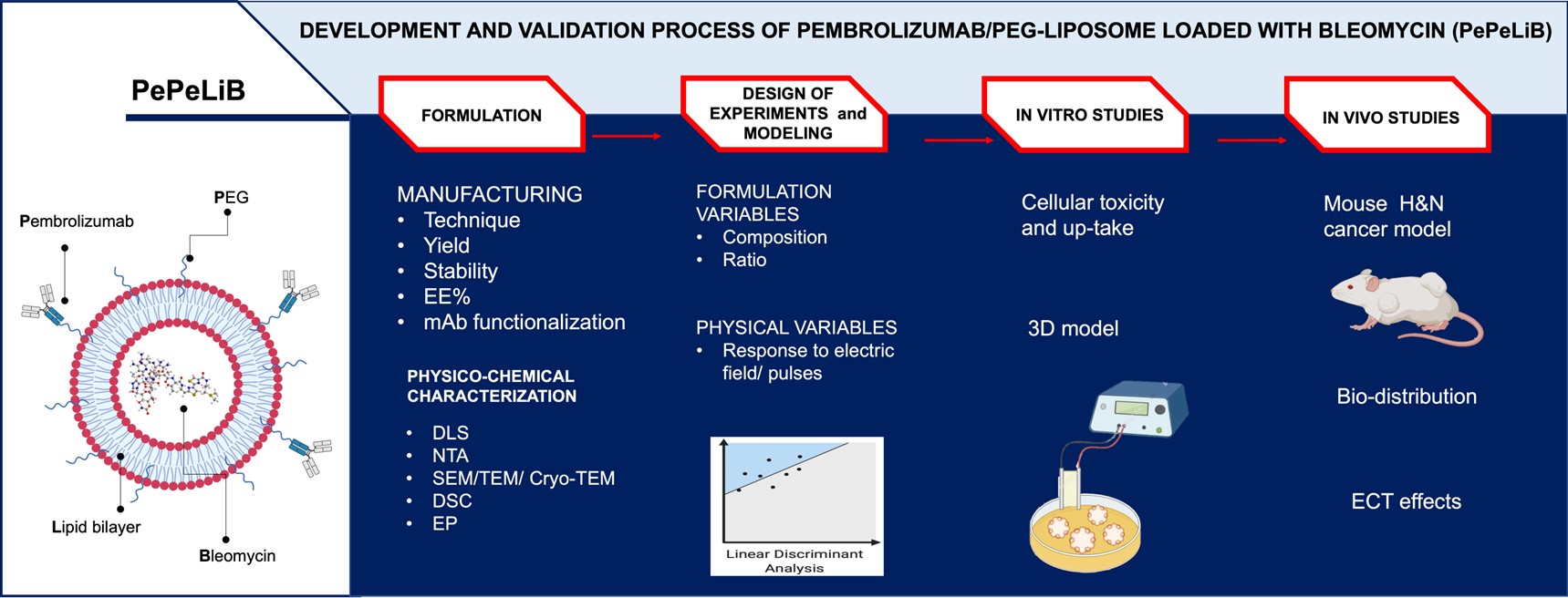Università degli Studi di Pavia - unipv.it
CANCER TREATMENT

PROJECT — Nano-Electro-Chemo-Immuno Therapy (NECIT) to enhance head and neck cancer treatment.
Italian Ministry of Health, RC-2023 grant #08053922
Research Unit contact person: Prof. Bice Conti, Dr. Silvia Pisani
Project contact person: Prof. Marco Benazzo
Email – bice.conti@unipv.it; silvia.pisani@unipv.it
Abstract
Electrochemotherapy (ECT), a combination of electroporation (EP) and chemotherapy, is used as standard treatment for cutaneous metastases, primary skin and mucosal cancers not amenable to surgery. A localized intensive electric field (1000-1400 V/cm) applied for a short time (ms), permeabilizes the tumor cell membranes, causes “vascular lock” in the tumor reducing drug washout and increasing recruitment of specific immune system cells that amplifies antitumoral effect. Bleomycin is the gold standard chemotherapy drug for ECT application, but weakness of Bleomycin-ECT treatment remains its short half-life into tumor cells and side effects. The project proposes to investigate nanomedicine application in ECT. Liposome will be formulated as Bleomycin carriers to improve the efficacy of ECT treatment. Moreover, due to their versatility these nanosystems will be investigated as platform to be loaded and functionalized with other drugs and/or monoclonal antibodies to target specific tumor types.
Keywords – Electrochemotherapy; Electroporation; Nanomedicine; Monoclonal Antibody; Head and neck cancer
PROJECT — Self-infiltrating nanotherapies for desmoplastic tumours stroma reshaping (NANO4RESHAPE)
Project contact person: Prof. Ida Genta and Dr. Enrica Chiesa
PhD student: Alessia Giglio
Email – ida.genta@unipv.it; enrica.chiesa@unipv.it
Abstract
Desmoplastic tumours are intricate entities where cancer cells are surrounded by a heterogeneous array of non-transformed stromal cells and extracellular matrix (ECM) which dynamically collaborate by paracrine and mechanotrasduction signals thus creating a tumour microenviroment (TME), characterized by a dense fibrotic stroma and high matrix stiffness. Over the last decades, a variety of nanomedicines has been investigated to enhance the therapeutic performance of anticancer drugs (e.i., Doxil®, Ambraxane®, Onpattro®). Unfortunately, so far approved nanomedicines have been unable to completely fulfil the promise. Observations available in the literature suggest that dense and stiff heterogeneous TME hampers the nanotherapeutics deep diffusion into the tumour from the blood vessel endothelium thus reducing the therapeutic efficacy. In this framework, targeting and modulating TME may open the way to nanodrugs and improve the therapeutic activity. This project endeavors a cell-specific targeting using engineered nanoparticles (NPs) produced with biologically compatible and already regulatory approved materials. To gain selectivity towards the cells of interest, NPs functionalized with selective biomolecules (antibody, antibody fragments and single chain variable fragments) will be used to recognize key components of TME and to infiltrate the nanocarriers into. To improve nanomedicine effects suitable innovative stimuli-responsive polymers will be synthetized.
Keywords – Desmoplastic tumours, Microenviroment, Smart Nanotechnology/Nanoparticles
